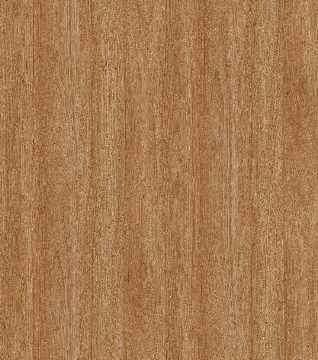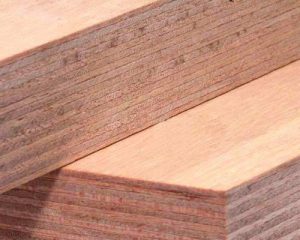
There are many factors that can be considered when evaluating a product, including its performance, Intumescent, Flame retardant, water resistance, and hard surface texture. For example, a product may be described as flame retardant if it is flame retardant in the fire code. The fire code also requires a product to be waterproof and intumescent. However, these features are not always the same. This article will discuss the different methods for evaluating the properties of melamine-impregnated paper veneer fiberboard.
Intumescent
How to test melamine impregnaTED paper veneer fiberboard and performance? The melamine impregnated paper is an important component of wood furniture. Particleboard, which is mainly purchased, has a high moisture content, which can affect the veneering process. For example, high moisture content can lead to shooting and delamination during veneering. On the other hand, low moisture content can lead to the delamination or lamination of paperboard during hot pressing. The moisture content needs to be monitored closely throughout the entire production process, and any unqualified substrate must be discarded before it can lead to the production of melamine impregnated paper veneer fiberboard.
The temperature and time of hot pressing should be adjusted according to the type of paper. A deep-colored paper should be pressed at a low temperature and hold for 40 seconds. A light-colored paper should be pressed at a higher temperature. It is important to check the appearance quality of the decorative panel at any time before using it. While feeding, it is important to check whether the surface is clean.
The test methods used for melamine impregnated paper veneer fibreboards include the cigarette fire, water-based adhesives, and a vapor barrier. The flame retardant is a mixture of magnesium hydroxide and melamine phosphate with a weight ratio of 3:1. The process is comparatively simpler and requires less material, energy, and time, so it is an efficient way to finish particleboards.
The use of flame-retardant adhesives is common in home decoration materials. Adding flame retardants to wood boards is an inexpensive and easy way to meet the requirements of the flame-retardant test. In addition to fire-retardant properties, melamine impregnated paper veneer fiberboards may also meet customer functional requirements. And it may even reduce the cost of making these products, as long as they are made of high-quality materials.
Flame retardant
To determine whether a melamine furniture board will last for a long time, it is necessary to test its performance. Melamine impregnated paper veneer fiberboard is tested to determine the residual volatile fraction. For this test, a melamine furniture board with 30 sheets is divided into three groups, each consisting of 10 sheets. For each group, the initial weight of the test piece is G, and a section of the impregnated paper veneer is cut into a 32cm x 32cm rectangle. The test piece should be free of defects.
The paper must be made from a high-quality decorative base paper. All papers must be inspected and qualified for entering the production line. The impregnated paper should follow strict process requirements. The process time should be 39 minutes for each layer, and the glue quantity should be greater than or equal to 130% of the base paper. After impregnation, the impregnated paper must be packed in plastic film with adhesive strips.
Melamine impregnated paper veneer fiberboard should be exposed to ambient conditions for at least eight to ten days before fabrication. High and low relative humidity will affect the Veneer-Art’s ability to absorb moisture. Therefore, it is essential to acclimate the Veneer-Art and substrate to the same ambient conditions eight to 10 days before fabrication. Ambient conditions should be at least sixty-five percent relative humidity and 64-72degF (18-22degC). It is important to ventilate the area around the components.
When testing melamine-impregnated paper veneer fiberboard for durability, it is necessary to determine the flow of melamine resin. The resin flow should be between one and three percent of the total weight of the veneer fiberboard. The resin flow should be sufficient to impart good wear and stain characteristics to the laminated product. In addition, the melamine resin should be sufficiently infiltrated to enable adhesive bonding with structural substrates.
Waterproof
Melamine Board is a water-proof melamine-impregnated film-coated artificial board. The veneer of Melamine Board is created by soaking various paper types in melamine resin and drying to a certain degree of curing. It is then laid on particleboard, medium-density fiberboard, or hard-core fiberboard. The board is then hot-pressed. It is comprised of several layers of paper, including a top-surface paper, a decorative paper layer, and a bottom-paper layer.
This type of veneer is often used in production industries. It is also used for shipboards, carriages, and packing boxes. The advantages of this material include a smooth surface and high durability. It also has an increased resistance to chemical medicines, is wear-resistant, and can resist common solvents. It is also very economical. The durability of Melamine veneer particle boards makes them an excellent choice for outdoor applications.
Melamine paper has a variety of uses in the home. It is a cost-effective option for multipurpose projects. It is shatter-resistant, water-resistant, and a great alternative to wood composite panels. However, melamine is susceptible to warping, chipping, and discoloration, and improper installation can lead to a project’s premature failure. As long as the melamine is applied properly, it has a five-year lifespan.
Another type of water-proof melamine impregnated paper-veneer fiberboard is called StarBoard. This product is made from a specially stabilized multi-color polymer sheet. It is easy to machine, and is available in a range of colors and thicknesses. It is also available in specialty colors. King Plastic Corporation has partnered with a variety of manufacturers and suppliers in order to make it more accessible to consumers.
Hard surface texture
The present invention provides a wood veneer surfaced laminate. The wood veneer surfaced laminate comprises a wood veneer sheet 14 that has been impregnated with a heat-curable resin. The laminate further includes one or more plies of heat-curable resin-impregnated core paper 12 and a barrier sheet 10. The wood veneer surfaced laminate can be made of any wood material, including hard maple, basswood, oak, walnut, or any other natural fiber.
The paper used in this process is either an untreated wood or an engineered wood product. Wood veneer sheets are usually supplied in a stack form and are fed individually to the first coating station. These sheets are thin, delicate, and are produced in any desired size. The wood veneer sheet typically has a basis weight of 250 to 350 grams per square meter and a thickness of 0.45-0.60 mm.
The melamine resin is used to produce a wood veneer fiberboard with a hard surface texture. Melamine is a naturally occurring chemical that is highly resistant to water. During processing, the resin is dissolved in an aqueous solution of formaldehyde. Aqueous melamine-formaldehyde is a common component. In some cases, the resin is modified so that it can penetrate the wood veneer sheet and be cured at high temperatures.
Cold roll melamine can be used in the same process as thermally fused melamine. It is a more affordable alternative to thermally-fused melamine. The veneer core cannot be used during the thermal fusing process, since the resin will bubble up inside the core. Cold roll melamine is available in special sizes and colors. Melamine impregnated paper veneer fiberboard is available in a wide variety of colors and patterns.
Wear resistance
A new material with enhanced hardness, abrasion resistance, and water resistance has been developed for wood-based panel composites. The modified veneer improves the surface properties and bonding strength of the panel composite while still providing satisfactory touch and feel properties. The modified veneer was bonded to the wood-based panel substrate in a close bond and the hardness was improved through hot pressing.
After heat pressing, melamine paper develops its many properties. Among them, it is inexpensive and can be manufactured at scale. It has strong adhesive properties, making it a suitable material for interior architecture and decoration. Moreover, this material is environmentally friendly, fully compliant with the Paris Agreement and is non-toxic when not consumed. This material is suitable for furniture applications that require high wear resistance.
The present invention provides a wear-resistant laminated panel with a wood veneer surface. The laminated panel consists of a substrate and a thin wood veneer. The veneer is adhered to the substrate, while the resin-impregnated protective layer is affixed on top. In addition to providing an exceptionally durable surface, the melamine-impregnated paper veneer fiberboard is also resistant to moisture.
This material consists of wood-based panels covered with melamine-impregnated paper. It is widely used in flooring and furniture, due to its high wear resistance and waterproof properties. The disadvantage of this material is that its processing is complex and may release melamine or formaldehode. Further, it is not compatible with many materials and has to be tested thoroughly. Once it has undergone the testing, it can be widely used in flooring and furniture.

